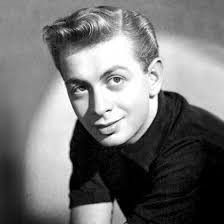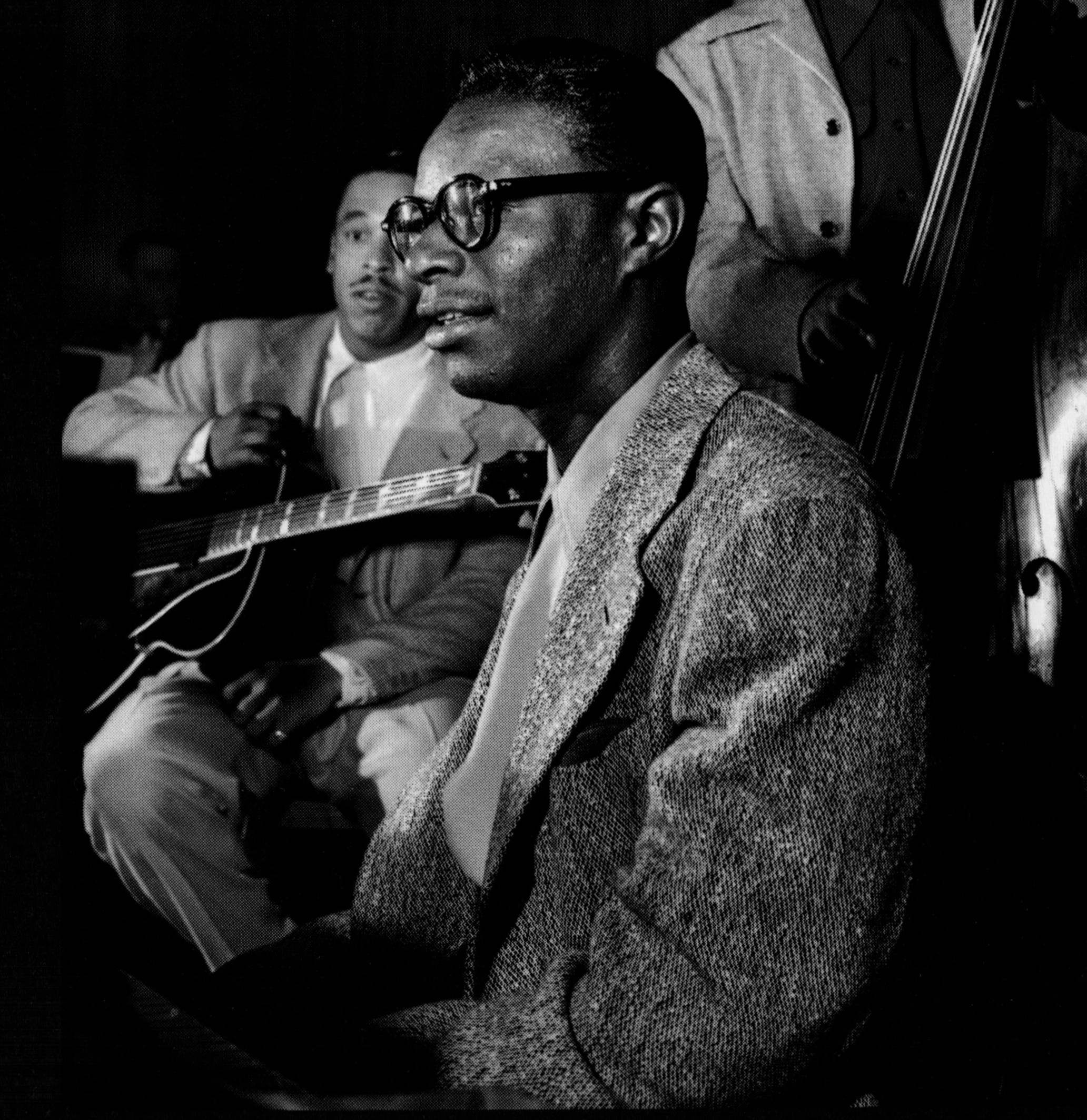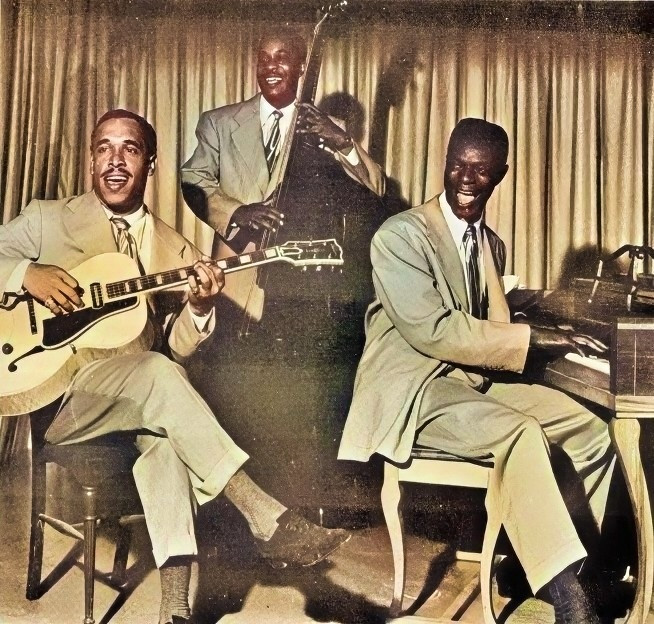The summer of 1945 in the San Fernando Valley was scorching. In this heat, the genesis of one of the most beloved Christmas songs began. Singer Mel Tormé recounted the tale: “One excessively hot afternoon, I drove out to Bob Wells’s house in Toluca Lake for a work session. The San Fernando Valley, always at least ten degrees warmer than the rest of town, blistered in the July sun. Bob lived with his parents in a beautiful Colonial-type home, but even it was oppressive in those pre-air conditioned days.” This sweltering day ironically sparked the creation of a timeless winter classic.
 Mel Tormé in the 1940s, co-creator of The Christmas Song, pictured in a vintage portrait, highlighting the song's origins in an unexpected summer heatwave
Mel Tormé in the 1940s, co-creator of The Christmas Song, pictured in a vintage portrait, highlighting the song's origins in an unexpected summer heatwave
Tormé continued, “I opened the door and walked in… I called for Bob. No answer. I walked over to the piano. A writing pad rested on the music board. Written in pencil on the open page were four lines of verse:”
Chestnuts roasting on an open fire
Jack Frost nipping at your nose
Yuletide carols being sung by a choir
And folks dressed up like Eskimos
When Bob Wells finally appeared, dressed for the heat in tennis shorts, he explained his inspiration: “It was so damn hot today,” he said, “I thought I’d write something to cool myself off. All I could think of was Christmas and cold weather.” Tormé recognized the potential immediately, replying, “You know, this just might make a song.”
In a mere forty-five minutes, “The Christmas Song,” also known as “Chestnuts Roasting on an Open Fire,” was complete. Excited, Tormé and Wells played it for Carlos Gastel, Tormé’s manager, then lyricist Johnny Burke, and finally for Nat King Cole. Cole instantly connected with the tune. However, it wasn’t until the fall of 1946 that Nat King Cole recorded “The Christmas Song,” marking the beginning of its journey to becoming a holiday staple.
Nat Cole himself elaborated on his first encounter with “The Christmas Song” to jazz journalist Leonard Feather in 1961: “Mel Torme’ brought it to me while I was working at the Trocadero. It was in the middle of a heat wave, when so many Christmas songs seem to be recorded. I told him it was beautiful but I didn’t feel it would be right to do it with just a trio.”
Music historian Will Friedwald adds context, noting that both Cole and Gastel saw the song’s potential beyond jazz and blues. Initially, Cole hesitated to use strings, a departure from his trio work. “Capitol was adamantly against the idea,” Cole explained, “so I cut it first with the trio.” This initial resistance from Capitol Records makes the story of “The Christmas Song” even more intriguing, highlighting Nat King Cole’s artistic vision.
Nat King Cole’s Four Recordings of “The Christmas Song”
Nat “King” Cole ultimately recorded “The Christmas Song” four times, each version contributing to its enduring legacy. The first two recordings took place in New York City in 1946.
The first, on June 14, featured the classic King Cole Trio: Cole on piano and vocals, Oscar Moore on guitar, and Johnny Miller on bass. This initial recording captured the raw essence of the song with a minimalist jazz arrangement.
 Nat King Cole pictured in the late 1940s, smiling warmly in a black and white portrait, showcasing the iconic singer who popularized The Christmas Song
Nat King Cole pictured in the late 1940s, smiling warmly in a black and white portrait, showcasing the iconic singer who popularized The Christmas Song
Two months later, on August 19, a second recording was made, still featuring the King Cole Trio but now augmented with strings, a harp, and subtle drums. Charlie Grean, Russ Case’s assistant, crafted the arrangement. This version began to move towards the lush, orchestrated sound that would become synonymous with “The Christmas Song.”
In 1953, the third recording occurred in Los Angeles with a larger string ensemble. Pete Rugolo expanded upon Grean’s original arrangement, creating a richer, more opulent sonic landscape. This version solidified the song’s transformation into a full-fledged orchestral piece.
The final recording took place in Los Angeles in 1961. Using the 1953 Grean/Rugolo arrangement as a base, Ralph Carmichael further expanded the string section. This stereophonic version is perhaps the most ubiquitous, the one most listeners recognize today.
The 1946 Trio Version: The Pristine Original
“The Christmas Song” – First Trio Recording (June 14, 1946)
This initial recording showcases “The Christmas Song” in its purest form. The King Cole Trio’s performance highlights the song’s inherent beauty. Oscar Moore’s guitar subtly quotes “Jingle Bells” as a coda, adding a familiar Christmas touch. The melody’s elegance, the supporting harmonies, and Nat Cole’s understated yet soulful vocal delivery are all beautifully showcased in this intimate setting. The simplicity of the piano, bass, and guitar trio allows each musical element to shine.
 The King Cole Trio in 1945, a black and white group photo featuring Oscar Moore, Johnny Miller, and Nat King Cole, highlighting the original performers of The Christmas Song
The King Cole Trio in 1945, a black and white group photo featuring Oscar Moore, Johnny Miller, and Nat King Cole, highlighting the original performers of The Christmas Song
Interestingly, some lyrical quirks exist in this first version. Cole pronounces “by a choir” as sounding like “by require” and uses “reindeers” instead of “reindeer.” These minor imperfections, perhaps overlooked in the initial recording, add a touch of unique character. At the time, no one could predict the song’s immense popularity. It was simply another tune for the King Cole Trio. Even Nat himself felt strings would enhance the trio arrangement. “As soon as they played it back, I knew it was wrong, and finally convinced them to let me remake it with a string section added,” Cole admitted.
The 1946 String Arrangement: Towards a Classic Sound
“The Christmas Song” – String Arrangement (August 19, 1946)
Two months later, the King Cole Trio returned to the WMCA recording studio in Manhattan, this time to record “The Christmas Song” with the strings Cole envisioned. Nat Cole sought an arrangement to complement the trio’s sound. He initially approached Russ Case, a renowned arranger. However, due to contractual obligations, Case’s assistant, Charlie Grean, took on the task.
Grean’s arrangement masterfully enhances the harmonic beauty of “The Christmas Song” without overshadowing the trio’s core performance. This recording achieves a perfect balance, integrating the original trio approach with the added instrumentation, primarily strings. This version represents the definitive Nat “King” Cole treatment of “The Christmas Song,” the sound that became iconic.
Remarkably, Cole repeats the same lyrical nuances from the first recording, pronouncing “by a choir” as “by require” and using “reindeers.” Despite these minor quirks, this recording became a hit, cementing “The Christmas Song” as an evergreen holiday classic, played endlessly each Christmas season.
The 1953 Refinement: The Polished Masterpiece
“The Christmas Song” – 1953 Refinement (August 24, 1953)
By 1953, “The Christmas Song” was a certified holiday hit. The era of high-fidelity long-playing records had arrived, and Nat “King” Cole had ascended to mainstream stardom. The jazz-centric days of the King Cole Trio were largely in the past, with Cole’s piano playing becoming a less frequent feature in his performances.
 Nat King Cole's The Christmas Song CD cover, featuring a festive image of Nat King Cole against a snowy backdrop, representing the widely recognized 1953 version of the song
Nat King Cole's The Christmas Song CD cover, featuring a festive image of Nat King Cole against a snowy backdrop, representing the widely recognized 1953 version of the song
This 1953 recording is considered by many to be the definitive version of “The Christmas Song.” It represents the culmination of the previous recordings, distilling them into a seamless and polished whole. The lyrical “mistakes” are now corrected, showcasing a confident and professional performance by a major artist, supported by Capitol Records’ top-tier production.
This version also reveals a significant influence on pop singer Johnny Mathis, whose early recordings clearly draw inspiration from Nat Cole’s vocal style.
While Nat Cole recorded “The Christmas Song” again in 1961 in stereo, that version closely mirrors the 1953 recording, primarily offering improved audio fidelity. The 1953 Grean/Rugolo arrangement, further expanded with strings and conducted by Ralph Carmichael, remained the foundation. This final version is the most widely heard, but the 1953 recording captures a unique moment in the song’s evolution.
These remastered recordings offer a journey through the history of “The Christmas Song,” revealing the evolution of a classic.
Notes and Links:
(1) It Wasn’t All Velvet, by Mel Torme’ (1988) Viking, pages 83-84.
(2) Liner notes to the 1991 Mosaic set of CDs The Complete Capitol Recordings of the Nat King Cole Trio, written by Will Friedwald, page 28.
Explore more holiday music:
“Let It Snow” (1945) Woody Herman/Neal Hefti with Sonny Berman and Bill Harris.
“Jingle Bells” (1941) Glenn Miller with Tex Beneke, the Modernaires, Ernie Caceres and Billy May
Discover Nat Cole’s jazz piano artistry: https://swingandbeyond.com/2017/09/23/the-smell-of-money-george-shearing-and-nat-king-cole/
Experience Pete Rugolo’s diverse arranging skills: https://swingandbeyond.com/2019/11/06/salute-1958-stan-kenton-and-pete-rugolo/
